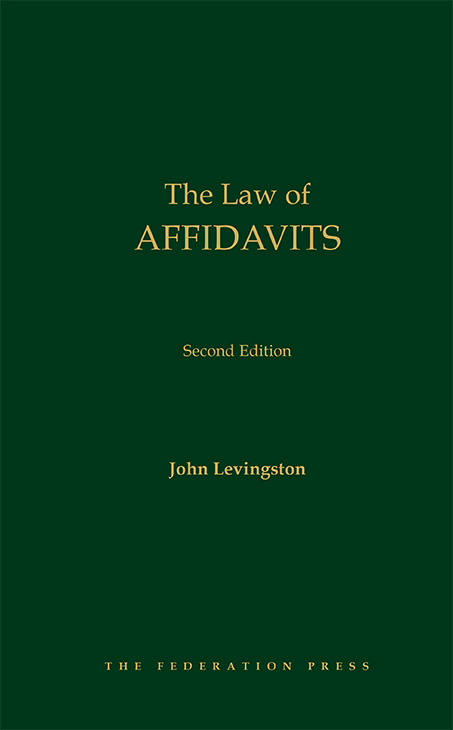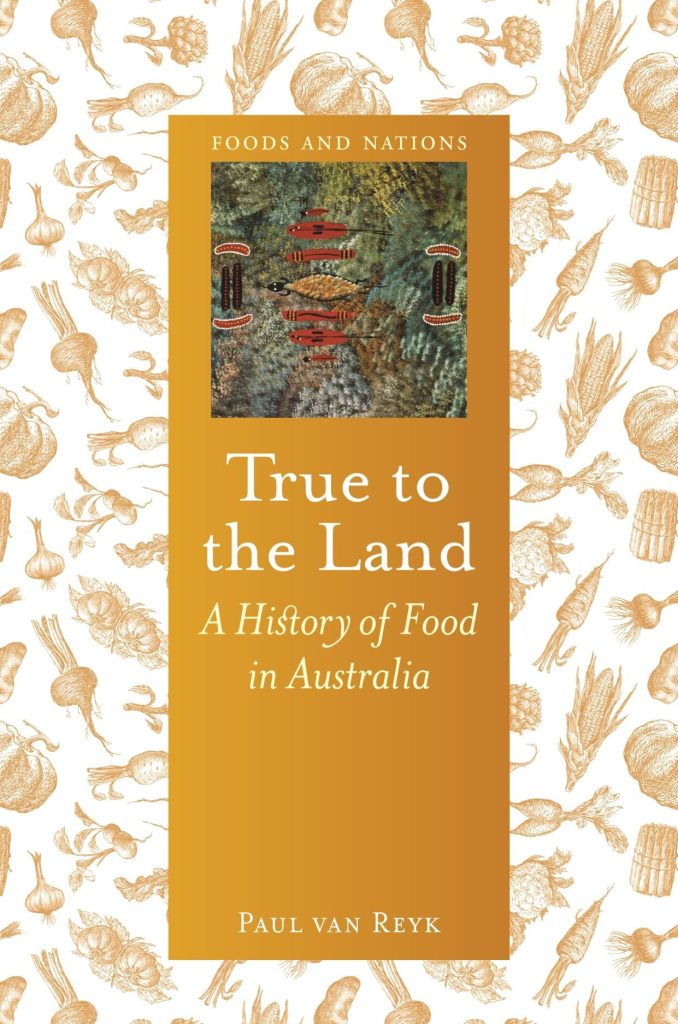Author: John Levingston
Publisher: The Federation Press
Reviewer: Robert Quirk
When I was given the opportunity to review this book, I thought that it would be a fantastic addition to my library. Despite the book being focused on the Evidence Act 1995 (Cth), I still hold that view. It is a useful addition to a Queensland lawyer’s armoury of references, particularly, if they practise in the federal jurisdiction and, as a practical guide, as long as the reader is cognisant of the fact that the law might not be exactly as stated/referenced in the book if they are in a Queensland court or tribunal.
Ameliorating this issue, there are jurisdiction summaries for each of the federal courts and courts in each state, New Zealand and Singapore. The jurisdictional summaries are a ready reckoner for each jurisdiction and refer to the individual rules relating to affidavits, other relevant legislation, the ethical rules and then all the practical references, including for preparation and form, attendance, cross-examination and use, amongst other things.
The book has detailed sections for many common areas that, sometimes, are done poorly. One of these is the handling of direct speech and indirect words, as well as numerous specific issues relating to that type of evidence. The text includes an example of a commonly used formula for a conversation.
There are parts dealing with what should not be in an affidavit. These include sections relating to counsel’s advice and the loss of privilege.
I think that the precedents section is a good resource. It includes precedents as diverse as for business records, Calderbank offers, interpreters, notices of objection, notices of intention to call tendency and coincidence evidence and for different types of service.
Whatever I say in this review probably does not do the book justice because it is 383 pages long on all aspects of the law relating to affidavits. The topics in the table of contents are (excluding the usual introductory information):
1. Introduction
2. What is an affidavit?
3. Professional obligations
4. Preparation
5. The objectives – admissible, relevant and probative
6. Use of an affidavit
7. Form
8. The deponent and incapacity
9. Affirmations and oaths
10. Style
11. Content
12. Opinion
13. Attachments: annexures and exhibits
14. Filing
15. Service
16. Objections
17. Documentary evidence
18. Attendance of deponent
19. Use at the hearing
20. Irregularities and defects
21. Discretion
22. Cross-examination
23. False statements and contempt
24. Adverse consequences
Jurisdiction Summaries
Precedents
This book is highly recommended, if you practise in litigation.
Publisher: Federation Press
Authors: Lucy Geddes and Hamish McLachlan
Reviewer: Robert Quirk
As a staunch advocate for an Australian bill of rights, I eagerly grabbed this book, hoping to uncover evidence of 50 influential human rights cases that have shaped the nation. However, I was sceptical that it would truly fulfill my expectations. To my delight, I was proven wrong.
The book acknowledges that human rights are not adequately protected in Australia. I could not agree more. That doesn’t mean that there are not decisions that have changed Australia for the better, as the foreword by the Honourable Michael Kirby AC CMG, pithily, observes on the book’s merit:
“… That may be the greatest value of this book. It illustrates the potential of our legal system to safeguard and advance individual human rights, invoking often very limited tools and rejecting over-narrow legal outcomes.”
This book is reader-friendly and organized into sections covering a variety of rights, including those pertaining to first nations, women, the LGBTIQA+ community, individuals with disabilities, children, asylum seekers, refugees, prisoners, protection against racial discrimination, liberty, criminal justice, freedom of expression and political communication, democracy, a sustainable environment, and the rule of law.
Each case is also in an easy-to-read format with the title, a paragraph summarising the case and what the court found, the relevant human right(s), facts, issues, decision, key quotes, how the learned authors consider the case changed Australia, and the number of LawCite citations. Three examples demonstrate how easy the book is to read and understand.
For Love v Commonwealth; Thoms v Commonwealth [2020] HCA 3; 270 CLR 152 the summary is:
“Two First Nations men, one a Gunggari man born in New Zealand, and the other a Kamilaroi man born in Papua New Guinea, established that First Nations people cannot be regarded as aliens.”
In the discussion of Re Kelvin [2017] FamCAFC 258; 327 FLR 15, the relevant humans rights, in the context of a transgender young person, were:
- Right to equality and non-discrimination (International Covenant on Civil and Political Rights (ICCPR), arts 2 and 26; and
- Right to privacy (ICCPR, art 17).
Rowe v Electoral Commissioner [2010] HCA 46; 243 CLR 1 involved a law which prevented the registration of voters after electoral writs had been issued. The authors said of how this case changed Australia:
“The case was a significant victory for voting rights in Australia. Practically speaking the judgment made an immediate difference to the quality of democracy in Australia as it enabled 100,000 people to vote in the 2010 election who would have otherwise been disqualified from doing so. … While the right to vote has historically been viewed as a statutory right, the High Court rules that it is an essential part of our constitutionally prescribed system of representative government. …”
It will be intriguing to observe if the next edition expands to include more cases, such as NZYQ v Minister for Immigration, Citizenship and Multicultural Affairs or whether some are removed to maintain a limit of 50. I predict that with the rise of human rights laws across the nation, there will likely be a need for an increase in the number of cases included.
It is a good read but probably more for students and general interest. I consider it to be good value.
(Recommended retail price: $69.95)
Author: Nicholas Seddon
Publisher: The Federation Press
Reviewer: Robert Quirk
For this type of book, the best test is how useful it is in practice.
I have had Seddon on Deeds [1] for about a year, now, and have used it as a first port of call on a number of specific issues, including those relating to equitable remedies and volunteers. To get a flavour for the style of writing in discussing equity and volunteers, Dr Seddon says, hitting the nail on the head:
‘Perhaps one of the most fundamental misunderstandings about deeds is that they are supposed to eliminate any risk arising from the possibility of a lack of consideration. It has been said that a deed “imports consideration”. But this is misleading. It is true that a promise can be binding in the absence of consideration if it is embodied in a deed. However, if the appropriate remedy for breach is an equitable one, the lack of consideration immediately encounters the maxim “equity does not assist a volunteer”. A “one-way” promise in a deed will not be enforced, for example, through an injunction or specific performance, so long as the maxim applies. Why this was so, historically, is not clear.’ (footnotes omitted)
Even when the authorities are sparse, or run out, the learned author provides useful suggestions as to the appropriate solution.
Like a contract text, it is not one of those books that you will read from start to finish. Rather, it is designed to be used as a reference when faced with an issue in practice. The contents are comprehensive (see list of chapters below).
For anyone whose work involves the enforcement of contracts, this usually means deeds, as well. Accordingly, I would recommend Seddon on Deeds to anyone with this type of practice. I have found this book very useful in my own work.
The book is hardcover with a glossy gold colour, and the paper is high quality. The price reflects the high quality of the contents and the physical book. Recommended.[2]
[1] List price: $165.00
[2] List of contents is:
Foreword by The Hon Michael Kirby AC CMG
Preface to first edition
Preface to current edition
Table of Cases
Table of Statutes
1. The Use of Deeds
2. Execution
3. Delivery and Escrow
4. Alteration and Variation
5. Interpretation
6. Enforcement and Remedies
7. Discharge
Editor: Paul van Reyk
Publisher: Reaktion Books[1]
Reviewer: Robert Quirk
This book was a real find. I was hoping that it would tell me about the history of food in Australia. The book, however, does far more than that. It deals with how food and drink (food) was collected or produced, distributed and consumed. It also introduced me to the term ‘foodways’. That is how those activities are influenced by geography (landform and climate), economic policies, cultural practices, social relationships, global relationships and technologies.
As someone who enjoys reading about history, this book provides a fascinating insight into how Australian foodways have changed over time.
The book is essentially organised chronologically. Chapter One sets the scene – dealing with the continent itself. Chapter Two informs about the foodways of the First Peoples. The subsequent chapters are as follows: Settlers to Squatters – 1788-1850; Golden Soil and Wealth for Toil – 1851-99; Federation – 1900-1913; Between World Wars – 1914-45; Boundless Plains to Share – 1946-65; Transformations – 1966-79; Foodie Nation – 1980-99; and Millennium Reckonings – 2000-20.
The definition of foodways means diverse ground is covered in the book. So, not only will you find a recipe for Jugged Wallaby and read about the successes and failures of various policies, such as the soldier settlement schemes, but also learn about the German migrants in the Barossa Valley.
This book was very interesting and is highly recommended if you are interested in history and food.
[1] http://www.reaktionbooks.co.uk/ (accessed 30 September 2022)





